|
Here are a few of this week's stories from the Michigan Department of Natural Resources:
See other news releases, Showcasing the DNR stories, photos and other resources at Michigan.gov/DNRPressRoom.
PHOTO FOLDER: Larger, higher-res versions of many of the images used in this email, and others, are available in this folder.
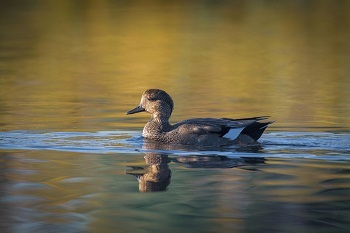
Winter has officially become the season of the duck, thanks in part to Rosemary Mosco’s comic about weird winter ducks! Each winter, bird enthusiasts across Michigan rejoice as these cool, quirky fowl descend upon our open waters.
Many of these ducks, geese and swans migrate from as far north as the Arctic tundra when northern waters freeze over. For these birds, Michigan is the perfect winter paradise.
If you live near a body of water that doesn’t completely freeze over the winter, you are likely familiar with the raucous calls and splashing sounds of congregating waterfowl. You might see dabbling ducks bobbing along the water’s surface, dipping forward headfirst in search of seeds and aquatic plants, or spot geese and swans honking in chorus as they splash-land. Diving ducks can be found disappearing and reappearing as they dive for mollusks and small fish under water.
We’ve highlighted a couple of our favorite fowl that you can see this winter, along with their special quirks (and quacks).
|
Gadwalls
From a distance, males and females of this dabbling duck (pictured above) appear brown and drab and can sometimes be overlooked. Identify the male by his black rump, small white wing patch and dark bill. Upon closer inspection, notice the intricately patterned feathers on the male’s head, chest and sides. Look for these underrated but gorgeous birds in southern Michigan marshes, lakes and river mouths.
Buffleheads
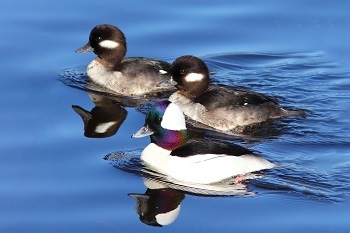
Our most diminutive diver, the bufflehead (pictured here), has very energetic feeding habits. Their name is from the male’s odd, puffy-shaped “buffalo head.” While females lack the iridescence of males, they have large, rounded heads and an oval, white cheek patch. Look for these adorable ducks in pairs or small groups on sheltered bays, lakes, estuaries (where river mouths meet lakes), ponds and slow-moving rivers.
To learn more about Michigan’s ducks, visit Audubon Great Lakes for the full story, or watch MI Birds’ Winter Waterfowl Identification webinar, offered in partnership with Ducks Unlimited, River Raisin Institute and Detroit Bird Alliance.
MI Birds is a public outreach and engagement program created by Audubon Great Lakes and the DNR, which aims to increase all Michiganders' engagement in the understanding, care and stewardship of public lands that are important for birds and local communities.
For media questions, contact Erin Ford at 313-820-0809.
|
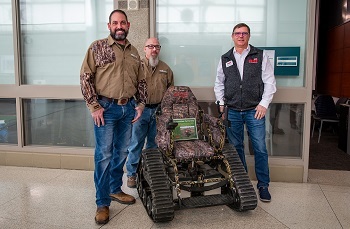
Several Michigan chapters of Safari Club International that recently stepped up to support outdoor recreation and wildlife conservation were recognized for their efforts at Thursday's meeting of the Michigan Natural Resources Commission in Lansing.
The Roscommon area in the northern Lower Peninsula, which includes destinations like North and South Higgins Lake state parks and Backus State Game Area, is popular for outdoor recreation pursuits. With an extensive county and state forest road system, the area offers easy access for many people, but some of its more rugged terrain can be difficult to reach for those who use wheelchairs.
Six Michigan SCI chapters – Novi, Detroit, Flint, Michigan, Mid-Michigan and Southeast Bow Hunters – recently donated $1,000 each toward the purchase of a track chair for area visitors to use. Other support came from campers and boaters who added $2 donations when making campground and harbor reservations. This off-road, electronic chair can easily handle trails, snow, sand and even up to 8 inches of water, allowing users to explore places that traditional wheelchairs might not reach.
“Those donations, along with other contributions, will make better access available to Michigan residents and visitors with limited mobility and enhance their outdoor recreation experiences,” said DNR wildlife biologist Mark Boersen.
|
The SCI effort is unique, Boersen said, in that the track chair will be shared between the DNR Parks and Recreation and Wildlife divisions. Interest in and support for track chairs are high; just last week the DNR announced reaching a fundraising goal – nearly half a million dollars – to cover the cost of obtaining track chairs at more than two dozen state parks!
The track chair is expected to be available for use starting in early 2024. To reserve it for outdoor experiences, contact Mark Boersen at 989-275-5151 or South Higgins Lake State Park at 989-821-6374.
The SCI-Michigan Involvement Committee – made up of all 10 Michigan chapters of SCI, whose mission is to enhance wildlife conservation and education in Michigan – also recently supported advancements in technology used to manage Michigan’s wildlife resources. The committee contributed $17,000 toward the purchase of an Illumina MiniSeq Sequencing System.
The DNR will use this equipment to “harness advancements in genetic technology to modernize population monitoring methods, starting with U.P. black bears,” said DNR Genetics Lab coordinator Caitlin Ott-Conn.
Questions? Contact Dwayne Etter at EtterD@Michigan.gov.
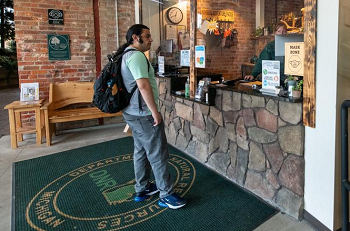
Whether in person at service centers or by phone, email, U.S. mail, social media or website, the DNR talks with a lot of people every day. No matter how we connect with customers, we know we can always do better – and you can help.
Throughout December, we're running a quick online survey aimed at learning how (and how often) customers interact with the DNR, what types of transactions and services they're interested in, and what they'd like to see more of in the future.
If you have ideas, we'd love your feedback! Take the survey now; it should take no more than a few minutes to complete and is open through Dec. 31. Nearly 30,000 people have already submitted surveys, but every suggestion will better help us plan for evolving customer needs.
Questions? Contact Charlotte Kiefer at 231-590-5409.
|
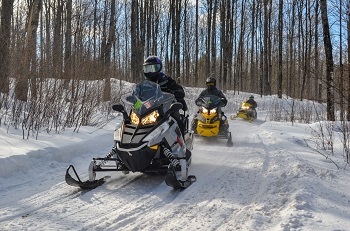
As people venture outside over the holiday break, the DNR reminds everyone to put safety first when enjoying favorite winter activities.
“People often get caught up in the excitement of the moment and overlook winter safety,” said Lt. Tom Wanless, with the DNR Law Enforcement Division’s Recreational Safety, Enforcement and Safety Section. “This is a beginning of the season reminder to please keep safety in mind this winter. Dress for the weather, check the forecast before you go out and, if you’re snowmobiling, please ride sober and at a safe speed.”
Before heading out, make sure to:
- Wear light layers that can easily be added or removed – it is possible to overheat even during the winter.
- Carry appropriate equipment for your activity, such as a flashlight, rope, ice picks or ice claws.
- Have spare equipment available in case something breaks.
- Stay hydrated and fueled – bring water and snacks.
- Bring a buddy.
- Tell others where you will be and how long you plan to be gone and schedule check-in times.
- Carry a two-way communication device that receives service in remote areas.
- Take an honest assessment of your health – if you’re not feeling well, don’t go out.
Wanless said there are key things to remember if plans include snow or ice.
In Michigan, all snowmobile operators ages 12 to 16 must obtain a Michigan-approved snowmobile safety certificate to operate without a legal guardian or to cross a highway or street. Earn your snowmobile safety certificate or purchase a trail permit at Michigan.gov/Snowmobiling.
The DNR’s Ride Right snowmobile safety campaign emphasizes the importance of riding sober, at a safe speed and on the right side of the trail. Speed is the main factor in fatal and serious injury snowmobile accidents. There were 19 snowmobile fatalities during the 2022-23 season, and one occurring at the start of the 2023-24 season. Find more safety tips and snowmobile rules and regulations at Michigan.gov/RideRight.
Always use extreme caution around ice, as there is no reliable way to test ice strength. Wear a personal floatation device and carry ice picks in an easy to reach location.
Learn more about recreation safety at Michigan.gov/DNR/Education/Safety-Info.
Questions? Contact Lt. Tom Wanless at WanlessT@Michigan.gov.
|
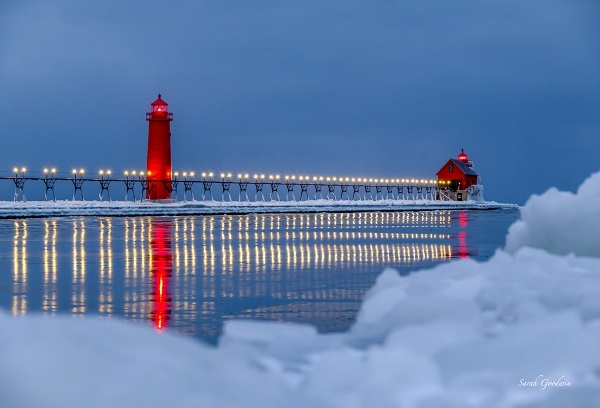 See more pictures by Michigan state parks photo ambassadors at Instagram.com/MiStateParks. For more on the program, call Stephanie Yancer at 989-274-6182. (This photo is by Sarah Goodwin, for the Michigan DNR, at Grand Haven State Park in Ottawa County.)
|